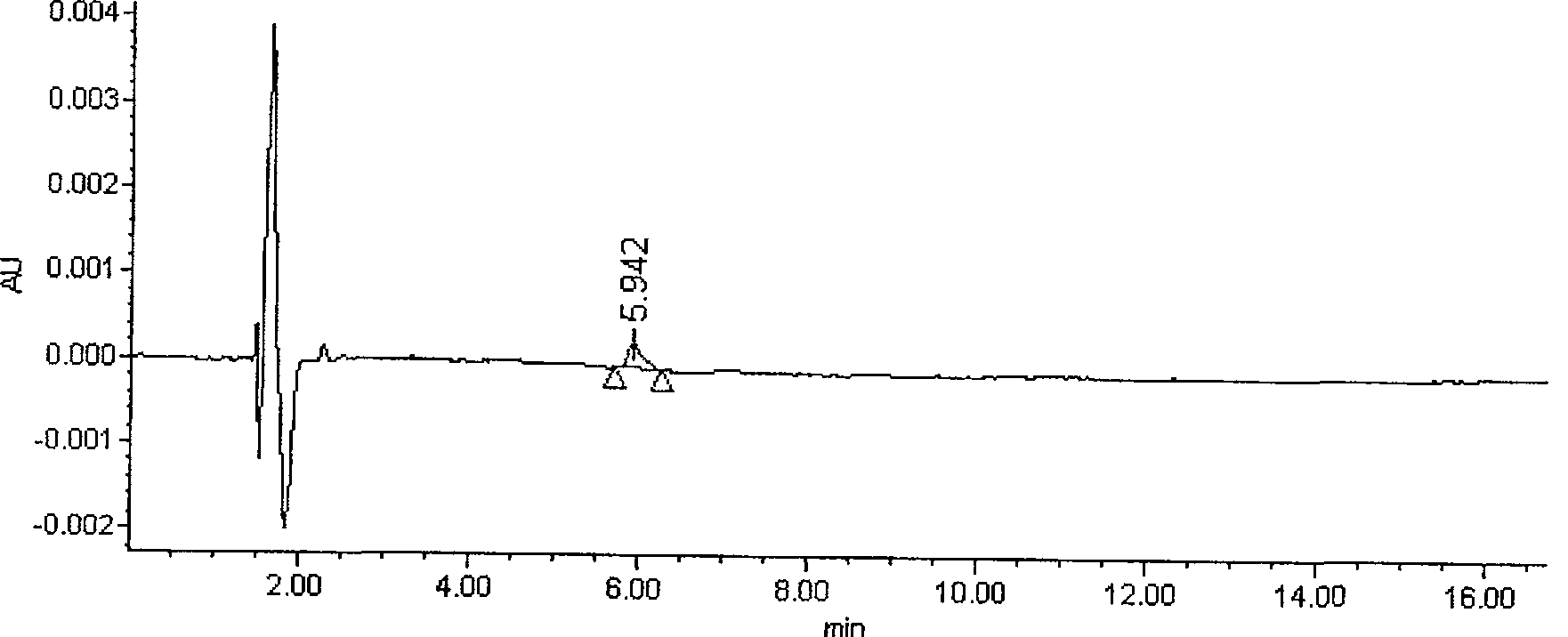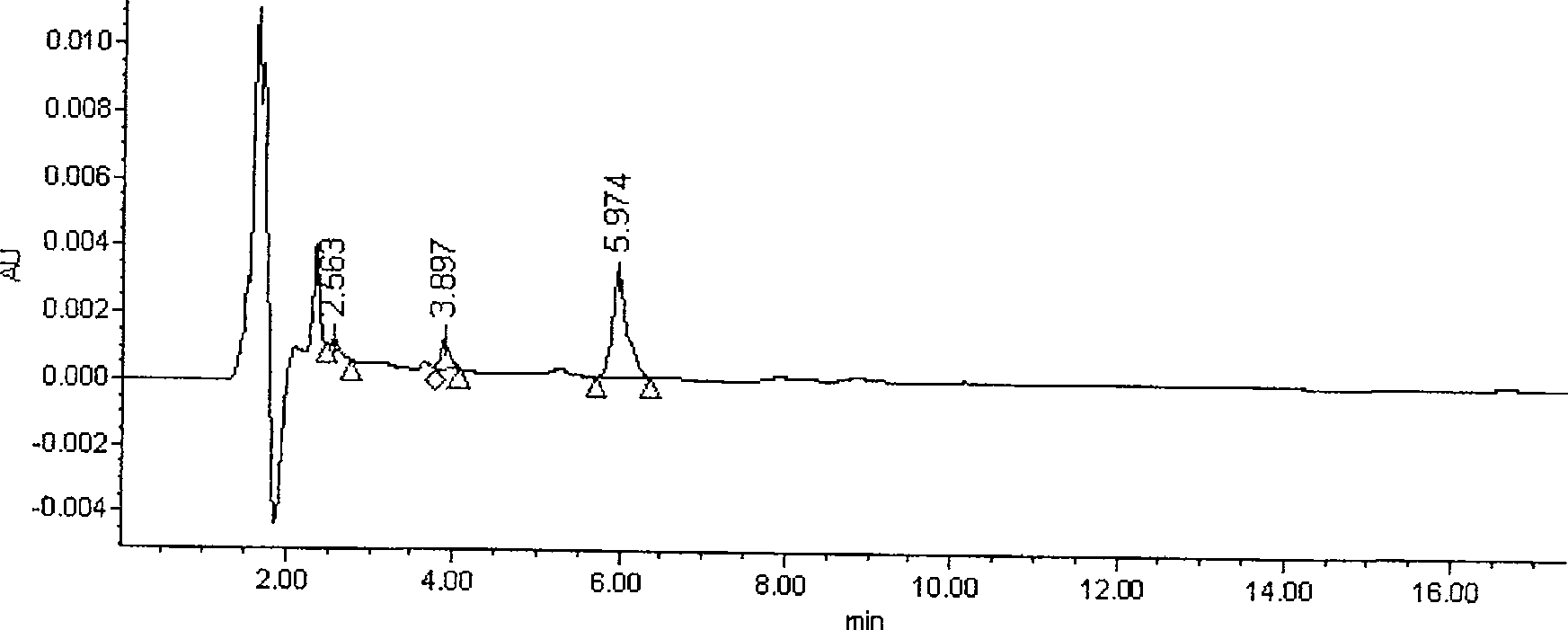Method for producing algae toxin immune affinity chromatographic column and use method thereof
A technology of algae toxin and chromatographic column, which is applied in the direction of chemical instruments and methods, analytical materials, algae/bryopeptide, etc., can solve the problems that the measured value is far from the actual value, interfere with the detection result, etc., and achieve a significant purification effect, The preparation method is simple and the effect is obvious
- Summary
- Abstract
- Description
- Claims
- Application Information
AI Technical Summary
Problems solved by technology
Method used
Image
Examples
Embodiment 1
[0041] Embodiment 1, the preparation of algal toxin immunoaffinity chromatography column
[0042] 1. Dissolve 0.1mg of microcystin-LR polyclonal antibody in 5mL of 0.1M NaHCO containing 0.5M NaCl at pH 8.3 3 in the buffer.
[0043] 2. Weigh 0.2 g of cyanogen bromide-activated agarose freeze-dried powder, swell it with an appropriate amount of 1 mM dilute hydrochloric acid, and then wash it on a sintered glass filter to remove impurities.
[0044] 3. Dilute the swollen agarose gel in 0.1M NaHCO containing 0.5M NaCl at pH 8.3 3 Mix evenly with the antibody solution prepared in (1) in the buffer, and fully react with shaking at room temperature for 3 hours.
[0045] 4. Use 0.1M NaHCO containing 0.5M NaCl at pH 8.3 3 The buffer washes away the free antibody that is not bound to the agarose gel to obtain the agarose-antibody conjugated complex.
[0046] 5. Transfer the agarose-antibody coupling complex into a 1M ethanolamine solution containing 0.5M NaCl at pH 8.0 and keep for ...
Embodiment 2
[0051] Example 2. Application of algal toxin immunoaffinity chromatography column in the detection of microcystin-LR in Taihu Lake water samples polluted by cyanobacteria
[0052] 1. The method of using algal toxin immunoaffinity chromatography column
[0053] (1) The prepared cyanotoxin immunoaffinity chromatography column was pretreated with 5 mL methanol and 5 mL distilled water.
[0054] (2) 1L of water sample is passed through a glass GF / C microfiber filter, and the filtrate is passed through a treated algal toxin immunoaffinity chromatography column.
[0055] (3) Wash the column with 5mL PBS and 5mL distilled water to remove impurities;
[0056] (4) The microcystin-LR adsorbed in the column was eluted with 10 mL of pure methanol, the eluent was evaporated to dryness under reduced pressure, and the residue was dissolved in 0.5 mL of 30% methanol solution before HPLC analysis;
[0057] (5) The algae toxin purification sample is introduced into HPLC analysis, and the chro...
Embodiment 3
[0063] Example 3, the application of cyanotoxin immunoaffinity chromatography column in the detection of microcystin-LR in cyanobacteria powder
[0064] 1. Pretreatment of cyanobacteria powder
[0065] Add 1 g of crushed blue-green algae powder to 30 mL of 5% acetic acid, stir and extract for 60 minutes, centrifuge, collect the supernatant, precipitate and repeat the extraction twice, combine the supernatant and filter, and the filtrate is set aside.
[0066] 2. The method of using the algal toxin immunoaffinity chromatography column
[0067] The immunoaffinity column purification method of the filtrate is the same as that of the water sample in Example 2.
[0068] 3. Test results
[0069] The content of microcystin-LR in cyanobacteria powder is much higher than that in water. According to the approximate content of the filtrate purified by immunoaffinity chromatography column in HPLC for the first time, dilute it to within the linear range of 0.01-0.5 μg / mL of Microcystin-...
PUM
 Login to View More
Login to View More Abstract
Description
Claims
Application Information
 Login to View More
Login to View More - R&D
- Intellectual Property
- Life Sciences
- Materials
- Tech Scout
- Unparalleled Data Quality
- Higher Quality Content
- 60% Fewer Hallucinations
Browse by: Latest US Patents, China's latest patents, Technical Efficacy Thesaurus, Application Domain, Technology Topic, Popular Technical Reports.
© 2025 PatSnap. All rights reserved.Legal|Privacy policy|Modern Slavery Act Transparency Statement|Sitemap|About US| Contact US: help@patsnap.com



